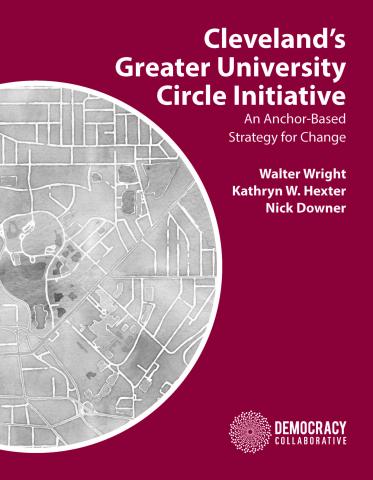Written by Randy Oostra, CEO of ProMedica (a member of the Healthcare Anchor Network) with the support of The Democracy Collaborative's David Zuckerman and Katie Parker, this report offers an in-depth look at how the Toledo, Ohio based health system aligned its institutional operations and clinical practice to better tackle the social determinants of health. From an innovative hospital-owned grocery store in a food desert to investments in preserving affordable housing, this exploration of ProMedica's decade-long journey to understand how their resources as a healthcare anchor could be used for the wellbeing of the communities they serve is a useful guide for hospitals and health systems embarking on similar shifts.
Community Wealth Innovators Series
Working with leading practitioners in the field to document the inspiring new models and critical lessons learned in on-the-ground efforts to build more inclusive and equitable local economies.
The Anchor Mission Playbook
with support from Chicago Anchors for a Strong Economy (CASE), the Civic Consulting Alliance, and The Democracy Collaborative
Anchor institutions can play a key role in helping the low-income communities they serve by better aligning their institutional resources—like hiring, purchasing, investment, and volunteer base—with the needs of those of communities. The recommendations in this “playbook,” drawn from research carried out to help Rush University Medical Center (RUMC) align around its Anchor Mission, are being published to help other hospitals and health systems accelerate their own efforts to drive institutional alignment with community needs.
Cleveland’s Greater University Circle Initiative: An Anchor-Based Strategy for Change
Cities are increasingly turning to their “anchor” institutions as drivers of economic development, harnessing the power of these major economic players to benefit the neighborhoods where they are rooted. This is especially true for cities that are struggling with widespread poverty and disinvestment. Urban anchors— typically hospitals and universities—have sometimes isolated themselves from the poor and struggling neighborhoods that surround them. But this is changing. Since the late 1990s, as population, jobs, and investment have migrated outward, these “rooted in place” institutions are becoming a key to the long, hard work of revitalization. In Cleveland, the Greater University Circle Initiative is a unique, multi-stakeholder initiative with a ten-year track record. What is the “secret sauce” that keeps this effort together?
Can Hospitals Heal America's Communities?
Healthcare’s role in creating healthy communities through increasing access to quality care, research, and grantmaking is being complemented by a higher impact approach; hospitals and integrated health systems are increasingly stepping outside of their walls to address the social, economic, and environmental conditions that contribute to poor health outcomes, shortened lives, and higher costs in the first place.





